
Cardio vs. Weights: Which Workout is Right for Your Goals?
Choosing between cardio and strength training depends largely on your fitness goals, preferences, and individual needs. Cardio exercises, from running to cycling, are excellent for boosting heart health and stamina. Meanwhile, strength training, including exercises like squats and deadlifts, builds muscle mass, increases bone density, and enhances overall strength. Deciding which type of workout to prioritize can be challenging, but with a clear understanding of the pros and cons of each, you can make informed decisions that align with your goals.
Benefits of Cardio Training
Cardio, short for cardiovascular exercise, refers to any type of workout that raises your heart rate and keeps it elevated. This category includes running, cycling, high-intensity interval training (HIIT), and swimming. Cardio exercises are known for improving heart and lung health, burning calories, and building endurance.
Key Benefits of Cardio:
- Improved Cardiovascular Health: Cardio workouts are particularly effective at strengthening the heart, making it more efficient at pumping blood and lowering blood pressure. Studies show that regular cardio can reduce the risk of heart disease by up to 25%.
- Increased Stamina: By consistently challenging the heart and lungs, cardio exercises enhance overall stamina and aerobic capacity. This can make everyday activities feel easier and allow for longer, more intense workouts.
- Effective Weight Management: Cardio burns a significant number of calories, which can help in maintaining or losing weight. HIIT, in particular, is known for creating an “afterburn” effect, where the body continues to burn calories post-exercise.
Top Cardio Exercises and Their Benefits:
- Running: One of the most accessible forms of cardio, running improves lung capacity and endurance. It’s excellent for weight loss and can be adjusted by speed, distance, and terrain.
- Cycling: Great for building lower body strength while providing cardiovascular benefits. It’s lower-impact, making it ideal for those with joint concerns.
- HIIT (High-Intensity Interval Training): Short bursts of intense exercise followed by rest periods. HIIT workouts are quick, effective, and produce high calorie burn, even after the workout is done.
While cardio has many health benefits, excessive cardio or only focusing on cardio without strength training can lead to muscle loss over time. Balancing cardio with resistance training can provide a more comprehensive fitness routine.
Benefits of Strength Training

Strength training focuses on building muscle through resistance exercises. It includes lifting weights, using resistance bands, or performing bodyweight exercises. Strength training is essential for developing muscle, increasing metabolism, and promoting overall body strength.
Key Benefits of Strength Training:
- Increased Muscle Mass and Strength: By challenging the muscles to work against resistance, strength training promotes muscle growth and enhances overall strength. This increased muscle mass not only shapes the body but also supports joints and bones.
- Boosted Metabolism: Strength training increases muscle mass, which in turn boosts metabolism, as muscles burn more calories at rest compared to fat tissue.
- Improved Bone Density: Weight-bearing exercises improve bone strength and density, lowering the risk of osteoporosis and fractures.
- Functional Strength for Daily Activities: Building strength helps with activities like lifting heavy items, carrying groceries, or climbing stairs, making everyday life easier.
Common Strength Exercises and Their Benefits:
- Squats: Targeting the lower body, squats strengthen the glutes, quads, and hamstrings. They’re effective for building functional strength and stability.
- Bench Press: Primarily working the chest, shoulders, and triceps, the bench press is a staple for upper body strength.
- Deadlifts: A compound movement that targets multiple muscles, including the back, glutes, and hamstrings. Deadlifts are highly effective for building overall strength.
Strength training’s benefits extend beyond the gym, contributing to everyday strength and metabolic health. While strength training alone doesn’t burn as many calories in-session as cardio, the long-term metabolic effects and muscle growth make it a powerful tool for body composition.
Cardio and Weight Training for Fat Loss
When it comes to fat loss, combining cardio and strength training offers the most effective approach. Cardio burns calories during the workout, while strength training helps build and maintain muscle, increasing overall calorie burn throughout the day.
Structuring a Fat Loss Workout:
- Combine Cardio with Strength Training: For optimal fat loss, start with a strength session and follow up with cardio. This allows the body to burn through glycogen stores during strength training and focus on fat as a fuel source during cardio.
- HIIT for Higher Calorie Burn: Incorporating HIIT workouts once or twice a week can increase overall calorie burn and keep workouts shorter and more intense.
- Sample Weekly Plan for Fat Loss:
- Day 1: Full-body strength training (30-45 minutes)
- Day 2: HIIT cardio (20-30 minutes)
- Day 3: Lower body strength training (30-45 minutes)
- Day 4: Low-intensity cardio (e.g., walking or cycling, 30-45 minutes)
- Day 5: Upper body strength training (30-45 minutes)
- Day 6: Rest or active recovery
- Day 7: HIIT or full-body circuit training (20-30 minutes)
This combination keeps the body in fat-burning mode while preserving muscle mass.
Building Endurance with Cardio vs. Building Strength with Weights
The benefits of endurance and strength are distinct, and deciding between the two depends on your goals.
- Building Endurance with Cardio: For those focusing on stamina and aerobic capacity, cardio workouts like running, cycling, or rowing are ideal. Regular cardio enhances lung and heart health, enabling longer periods of physical activity without fatigue.
- Building Strength with Weights: If the goal is to increase strength or muscle size, resistance training is essential. Building strength not only shapes the body but also aids in physical tasks, reduces injury risk, and supports joint health.
A balanced approach that includes both cardio and strength exercises will benefit individuals looking to enhance overall fitness.
When and How to Combine Cardio and Weight Training
Combining cardio and weight training effectively requires planning to avoid overtraining. Here are some tips for incorporating both into your routine:
- Weights First, Cardio Second: When performing both in one session, starting with strength training maximizes energy levels for muscle-building efforts. Cardio afterward can help burn additional calories without compromising strength performance.
- Alternate Days: For those with more time, alternating cardio and strength days allows for a balanced approach. This prevents fatigue from impacting performance and offers recovery time for both muscle groups and the cardiovascular system.
- Sample Weekly Schedule:
- Monday: Full-body strength
- Tuesday: Cardio (30-45 minutes)
- Wednesday: Rest or active recovery
- Thursday: Lower body strength
- Friday: HIIT cardio
- Saturday: Upper body strength
- Sunday: Rest or light cardio
Common Misconceptions about Cardio and Weights
Myth 1: “Cardio Burns Muscle”
While excessive cardio without adequate nutrition can lead to muscle loss, moderate cardio combined with strength training doesn’t harm muscle mass. In fact, cardio supports heart health and enhances endurance, which can help with overall fitness performance.
Myth 2: “Weights Are Only for Bulking”
Strength training doesn’t necessarily lead to “bulking” unless paired with a calorie surplus and intense, progressive lifting. Lifting weights, even with moderate weights, helps in toning muscles, strengthening bones, and boosting metabolism.
Myth 3: “Cardio Alone is Best for Weight Loss”
While cardio burns calories, strength training builds muscle that, in turn, increases the resting metabolic rate. Combining both yields the best results for weight loss, as each supports the other for sustainable fat burning and muscle preservation.
Frequently Asked Questions
1. Can I achieve my weight loss goals by doing only cardio?
While cardio can be effective for weight loss, adding strength training promotes muscle preservation and a higher metabolic rate, which supports long-term weight management.
2. Should I do cardio before or after weights?
Doing weights first allows for maximum energy during strength training, which requires greater intensity. Cardio afterward can help burn additional calories without impacting strength gains.
3. How often should I work out to see results?
For general fitness, aim for at least 3-4 days a week, combining both cardio and strength. Adjust frequency based on goals, ensuring adequate rest for recovery.
Conclusion: Finding Your Ideal Balance
The choice between cardio and weights doesn’t need to be an “either-or” decision. Both have unique benefits that complement each other and support overall health and fitness goals. Whether you’re looking to lose weight, build muscle, increase endurance, or simply feel more fit, creating a routine that includes both cardio and strength training will help you achieve a balanced, sustainable approach to fitness. By setting clear goals and understanding the strengths of each type of exercise, you can build a workout plan that’s tailored to your unique needs and keeps you motivated
